https://www.musical-u.com/learn/crazy-easy-weird-modal-improv-trick-part-2/
Yesterday we introduced modal improvisation with a guest video. Today, Musical U’s own Andrew Bishko takes us on a journey through some crazy modal tricks that will help you to have fun while improvising with modes. Read more here: https://www.musical-u.com/learn/crazy-easy-weird-modal-improv-trick-part-2/
About Improvising with Structure and Phrasing
New musicality video:
When speaking, we use phrasing to emphasize ideas, capture our listener’s attention, and tell a story. The same holds true in music, and more specifically, in improvisation! Learn how to use phrasing to add structure, interest, and musicality to your improv. http://musicalitypodcast.com/57
Links and Resources
About Improvisation: http://musl.ink/pod51
About Improvising Rhythm: https://www.musical-u.com/learn/about-improvising-rhythm/
About Improvising with Scales and Chords: https://www.musical-u.com/learn/improvising-with-scales-and-chords/
How to “Just Play”, with Nick Mainella: http://musl.ink/pod52
How to Improvise for Real, with David Reed: http://musl.ink/pod54
Let us know what you think! Email: hello@musicalitypodcast.com
===============================================
Learn more about Musical U!
Website:
https://www.musical-u.com/
Podcast:
http://musicalitypodcast.com
Tone Deaf Test:
http://tonedeaftest.com/
Musicality Checklist:
https://www.musical-u.com/mcl-musicality-checklist
Facebook:
https://www.facebook.com/MusicalU
Twitter:
Tweets by MusicalU
YouTube:
https://www.youtube.com/c/MusicalU
Subscribe for more videos from Musical U!
Modes are particularly fun for improvising solos. Whether…
https://www.musical-u.com/learn/beginning-modal-improvisation-with-brian-kelly-from-zombie-guitar/
Modes are particularly fun for improvising solos. Whether you are just beginning with modal improvisation or have some licks under your belt, Brian Kelly from Zombie Guitar has some fantastic insights in this guest video. https://www.musical-u.com/learn/beginning-modal-improvisation-with-brian-kelly-from-zombie-guitar/
About Learning to Improvise
Over the last eight episodes, we’ve covered a lot of ground: we first looked at the right mindset for improv, then dove right into how to use rhythm, scales, chords, harmony, structure, and form to really get your spontaneous playing off the ground. In this episode, we give you an overview of how you can approach the task at hand – learning to improvise!
Listen to the episode:
Links and Resources
Enjoying The Musicality Podcast? Please support the show by rating and reviewing it!
Transcript
So we are now at the end of Improv Month here at Musical U, and I hope you’ve enjoyed this series of episodes focusing around the topic of improvisation.
We’ve covered a lot in the last eight episodes and so I thought it would be useful to wrap things up with an overview of how you might approach learning to improvise, given everything we’ve been discussing on the show.
What I’ll be talking about is guided largely by our new Improv Roadmap at Musical U. We’ll actually be talking more about Roadmaps in general in our next episode, but for now I’ll just say that what I’ll be laying out here is the basic outline of how we’ll be teaching members to improvise inside Musical U – and as always it’s totally personalisable and flexible based on your own background, interests, and progress.
One thing I’ll be talking about on the next episode is how vital it is to have the overall understanding of how a musical skill is learned, step by step. Otherwise it’s far too easy to continually put in effort in different directions and using different resources and feel like you’re making progress – only to realise later on that you’re not actually any closer to that skill you dreamed of having. That’s where Roadmaps come in and although this will be just a very brief overview I’m hoping that this episode can serve that purpose for you to. To draw together the various ideas we’ve talked about and give you a sense of how you can go forwards from here and learn to improvise – whether that’s as a member of Musical U or using other resources, like those from the terrific guests we’ve featured in Improv Month.
Approaching Improvisation
So the starting point for learning to improvise is to get your mindset right. As we talked about in episode 51 on “Approaching Improvisation”, there are a couple of traditional approaches to learning to improvise that are actually incredibly frustrating and limiting for musicians. One is to strictly stick to memorised rules and patterns and essentially choose notes at random within that. The other is to learn particular licks, riffs and runs that you know work well and then just reproduce this “vocabulary” when the time comes to improvise.
If you want to improvise in a way that’s truly free, creative, and brings your own musical ideas out into the world, then step one (and in my opinion the most important step) in learning to improvise is to decide not to follow those approaches. Yes, there is value in each of them and they can be part of your improvisation toolkit. But you want to decide from the outset that improvisation means bringing your own imagined musical ideas out from your head into the world through your instrument.
That means that improvisation will be about developing your brain and ear to understand the music you hear, remember or imagine. Improvisation becomes a process of “playing by ear what you imagine in your head”. At first this will take a lot of practice but over time you’ll build up those connections to the point where it becomes easy and instinctive. I hesitate a bit to use the word “instinctive” because that can imply something you do without really thinking or understanding – and that’s not what we’re talking about here. It’s instinctive in the sense of happening automatically and nearly effortlessly – but you have consciously learned how it all works and you thoroughly understand what it is you’re doing when you improvise.
It’s also important to discover at this early stage that you do have a musical imagination! It takes some practice to build up your ability to audiate, meaning to imagine music in your mind. But I assure you, if what I’ve said about imagination and creativity have you worried that you’re not particularly imaginative or creative – don’t worry! You definitely are, because you’ve spent your life listening to music and all that experience is in there waiting to come out. It just takes the right mindset and some simple mental frameworks and exercises to unlock it for you.
So that’s step one. At Musical U have a training module called “Approaching Improvisation” that explores this idea in detail and gives you some exercises to start really connecting with that mindset. We also had our Resident Pros for guitar, bass and piano produce resource packs specifically for those instruments on this topic. That’s how important we think it is to get your mindset right if you’re going to succeed and enjoy improvising.
And I don’t want to labour this point too much because hopefully if you’ve been following along with improv month you’re on board by now. We heard from David Reed from Improvise For Real, whose program lives up to its name and really focuses on that ear-led approach to improvising freely. We heard from Nick Mainella of the 10-Minute Jazz Lesson podcast who emphasised that learning vocabulary or transcribing solos needs to be combined with analysing them and developing your ear to actually understand what it is you’re learning so that you can apply it in your own creative way. We heard from Brenden Lowe of Jazz Piano School who explained you need to learn improvisation like building with legos, and see it as a natural part of everything you learn and hear in music. And we heard from David Wallimann who despite being a leading guitar educator and well versed in all the pattern-based approaches to improvising on guitar had one simple piece of advice: put the guitar down! And connect with your imagination first, then use your ears to bring that out through the guitar.
So we heard the same core message from multiple angles and multiple experienced and admired instructors on the topic of improvisation: Don’t get trapped in patterns and memorisation, or improv becomes just another example of reproducing the music that other people have created. Connecting with your imagination and your ear is the path to truly free, creative and enjoyable improvising.
Play By Ear Skills
Aside from taking that fundamental message to heart, there’s another reason it’s important to focus on this mindset choice early on. And that’s because it really affects the training you’ll do in learning to improvise.
As I said before – this is really about playing by ear what you imagine in your head. And so the brain and ear skills you need are very much the same as for playing by ear. We’re talking about relative pitch and things like interval recognition or solfa, recognising different types of chord and chord progression by ear, honing your sense of rhythm and understanding rhythmic patterns and styles, and so on.
So as we built out our new Improv Roadmap at Musical U it was a lot of fun because we could leverage all the training modules we already have for those areas. And our new Improv modules could just focus on the heart of what makes improvising unique.
You will find courses out there that treat improvisation as an isolated skillset, something you can just follow a straight-line course to learn. And that’s generally because they’re taking one of those other two approaches to learning to improvise. They’re just teaching you rules or patterns or vocabulary.
The truth is that if you want to be truly free as an improviser then you need a good musical ear, and so a lot of “learning to improvise” is about ear training and play-by-ear skills.
So that’s the second step to think about. Once you choose this path towards free, creative improvisation you’ll want to explore ear training and select the resources and training that will develop your musical ear to support your improvisation learning.
At Musical U what we do is we provide guidance on how to incorporate material from our Roadmaps for playing melodies and chords by ear along the way, and we also have a module specifically on Improvising Melody that lets you gently start exploring improvising even before you develop those ear skills, and lets you apply those skills as you develop them. This is also where some of the ideas from episode 53 about improvising rhythm come in, as we really encourage you to explore the different dimensions available to you as you choose what notes to play when, and how.
So improvising is part of your learning process throughout but you’re able to draw on all those other ear training resources to accelerate your understanding of how music works and what you want to create with your improvisation.
Introducing harmony
Once you get going with improvising melody it’s time to start thinking about harmony. As we talked about in episode 55, this is something that’s relevant and powerful whether you play a harmony instrument or not. So pianists for example will start thinking about improvising left and right hands together and how chords and melody interrelate. Guitarists can think about leveraging their chord knowledge to guide their improvisation. And brass and wind players can think about how to choose their melody notes to really match up well with the chord progression they’re soloing over – or even to imply a chord progression when playing without accompaniment.
This is such an important topic we’ve dedicated two of our new improv training modules to it at Musical U – one is about the idea of chord tones and how choosing notes which do and don’t belong to chords is a really effective way to create a musically compelling melody line. And the second is specifically about the tension and release effects you can create by playing around with the interplay of harmony and melody.
This is kind of a superpower in improvisation. The relationship between melody and the underlying harmony is a really important part of what distinguishes a solo that sounds like a stream of randomly-chosen notes from one that really sounds musical.
You can get there purely on your ears and the kind of approach I talked about earlier, translating what you imagine in your head out into the world. But you can really accelerate that learning process by incorporating some understanding of what’s going on with the chords, to help guide what you imagine and what you choose to play.
Structure and Form
So after step three of learning how to factor harmony into your improvisation, the next step follows naturally. Those chords have already given you experience of how important and powerful it is for your improvisation to follow a structure of some kind, and how that lets you more easily take the listener on a journey. That chord-by-chord thinking is just one level of structure available to you though.
So step four is to start thinking in terms of structure and form. If you have four bars with the same chord, are you going to do anything different with your melody in the first two bars than the second two? If you have a 16-bar section to solo over which naturally splits into two 8-bar sections, how are you going to make each one different and interesting? How are you factoring in the music’s own form, maybe a verse/chorus structure, into what you do with your improvisation? Or if you’re improvising entirely freely, what overall structure of sections can you put in place to make it sound like a real piece of music that keeps the listener engaged rather than just bar-after-bar sounding all a bit the same?
There are lots of tools and constructs you can apply here, to structure and shape your improvisation which we cover in the new training module on this topic. And again, this is going to level up your improv to sounding more creative, interesting and compelling for the listener.
Improvisational Styles
The final step in our Roadmap – which of course probably won’t be the last step you ever take in learning to improvise! That’s going to be a long and continually interesting journey for you. But the final step to think about is how to adapt your improvising to different styles of music.
It’s funny, because a lot of improvisation courses will start here. They are essentially trying to teach you a shortcut method to mimic true improvisation, and so will teach you licks or patterns that “work” in blues, or fit the rock style, and so on.
And again, that stuff is valuable – but it’s a bit like putting the cart before the horse.
So if you’re taking this different mindset to improvisation, that it is first and foremost about expressing your own creativity in music, then it’s really more about adapting your improvisation to fit a style – rather than learning a specific skill of improvising in that style.
So our last new module released this month is all about improvising in different styles. Building on the ear-led approach to improvisation you’ve been learning it gives you the guidance and examples needed to feel comfortable fitting in to the traditions and expectations of popular genres like rock, blues and jazz.
And that’s really how I’d encourage you to think about it, whether or not you’re following the Musical U Roadmap. Improvisation is about you and your instrument and the music you want to express. If you bring that ability to rock, great! If you bring it to blues, great! And if you want to go deep into jazz, great! These are all different flavours of the same core skillset – they aren’t just sets of patterns, rules and vocabulary to be learned and reproduced.
The nice thing is that when you approach learning to improvise in this way, led by your imagination and using ear skills to bring that out into the world, these last couple of steps about structure and different styles – there really isn’t a ton you need to study or practice. Because you’ve been listening to music your whole life. With a bit of active listening and a bit of improv practice you’ll find that you can simply leverage the fact that your musical imagination already pretty much knows how music works and how different styles sound. If you’re in a blues context, you’ll imagine something bluesy and play that. If you’re improvising in a different genre then you’ll imagine a different flavour of music and play that. Yes, it takes a bit of practice, but it’s all the same core skill of musical imagination coupled with ear skills to bring it out into the world.
So that’s the Roadmap we’ve been building out at Musical U and it’s a path you can follow yourself.
- Step one: Get your mindset right. Decide that you will pursue truly free, ear-led improvisation.
- Step two: Connect with ear training and start exploring the dimensions of improvising melody.
- Step three: Integrate harmony and explore how melody and harmony work together.
- Step four: Make use of structure and form in your improvisation.
- Step five: Learn to adapt your improvising to a variety of musical styles.
All that remains is to say a few things. The first is: thanks for joining me for improv month! I hope you’ve really enjoyed these episodes and that they’ve helped a few lightbulbs to go on for you.
The second is that if you’d like to follow the path I’ve outlined here then our new Improv Roadmap is waiting for you and we’d love to have you with us as a member of Musical U. As always check out musicalitypodcast.com for a special offer for podcast listeners.
And finally just to wish you luck and happy music-making as you explore this new improvisation journey. There really is nothing as enjoyable and satisfying as creating your own great-sounding music on-the-fly, powered purely by your own imagination. So go out there and have fun learning to improvise!
The post About Learning to Improvise appeared first on Musical U.
Many musicians avoid improvising music because they think…
https://www.musical-u.com/learn/game-your-way-to-impressive-improvising-interview/
Many musicians avoid improvising music because they think it is too complicated or challenging. Jeffrey Agrell joins Musical U to discuss improvisation games, an excellent way for beginners to get started in improvisation! https://www.musical-u.com/learn/game-your-way-to-impressive-improvising-interview/
The rhythm section is the foundation for any jazz ensembl…
https://www.musical-u.com/learn/improve-your-improv-listen-to-the-rhythm-section-with-stefan-hall/
The rhythm section is the foundation for any jazz ensemble. Dr. Stefan Hall shows us how to study and listen to the jazz rhythm section – bass, piano, guitar, and drums – to connect with the inner structure of jazz. https://www.musical-u.com/learn/improve-your-improv-listen-to-the-rhythm-section-with-stefan-hall/
Musical improvisation is perhaps the most intimidating pr…
https://www.musical-u.com/learn/can-musical-improvisation-singing-really-be-fun/
Musical improvisation is perhaps the most intimidating proposition for the average musician. Singing, particularly in front of other people, is probably a close second! So can it really be possible to combine these two in a way which is actually fun? https://www.musical-u.com/learn/can-musical-improvisation-singing-really-be-fun/
Telling Your Own Story with David Walliman
New musicality video:
Find your musical voice as David Walliman joins us on Musicality Podcast. Learn more about his approach to learning music and improvising in this fascinating interview! http://musicalitypodcast.com/56
In this episode we’re speaking with David Wallimann, who has one of the most popular guitar channels on YouTube with over 100,000 subscribers there. As always when we’re interviewing an expert in a particular instrument, we recommend staying tuned even if you don’t play that instrument – because very little of what we cover is really instrument-specific.
As well as his popularity as a guitar educator, David is a composer and recording artist who has collaborated with the likes of Dweezil Zappa. And as you’ll hear in this episode he is just a lovely down-to-earth guy whose perspective on learning music and improvising is refreshing and seriously perceptive. David has his own guitar courses available at GuitarPlayback.com as well as a free Music Theory DNA course for guitarists at GuitarInfusion.com – something we suspect you’ll want to check out after hearing him describe it in this episode.
In our conversation we talk about:
– How to break free of fretboard patterns and “improvisation by numbers” with a counterintuitive exercise.
– The big problem that puts people off music theory and the surprising impact it can have on your musical creativity.
– The huge benefit you get from putting ego to one side and embracing your own uniqueness in music – both for improvisation, and for your musical life in general.
We loved chatting with David and are really glad to feature his unique perspective as part of Improv Month. As you’ll hear us say in this episode, we do think that guitar players tend to have a very particular relationship with music theory and with improvising – but David’s take on it all is something that would be valuable for any musician to take on board. We certainly hope you’ll enjoy hearing about it.
Listen to the episode: http://musicalitypodcast.com/56
Links and Resources
David’s website: https://www.davidwallimann.com/
David’s YouTube channel: https://www.youtube.com/channel/UCn72qZqgRSUAO1u3T0_UeKw
“Self Taught Musicians Suck?” video: https://www.youtube.com/watch?v=H9vXQs1mqRQ
Courses on Guitar Playback: https://www.guitarplayback.com/courses
Free “Music Theory DNA” course: https://www.guitarplayback.com/p/guitarinfusion
Note2Self: “I Love This!”, with Lisa McCormick: http://musl.ink/pod24
Doubling Down on Your Craft, with Brad Davis: http://musl.ink/pod48
Let us know what you think! Email: hello@musicalitypodcast.com
===============================================
Learn more about Musical U!
Website:
https://www.musical-u.com/
Podcast:
http://musicalitypodcast.com
Tone Deaf Test:
http://tonedeaftest.com/
Musicality Checklist:
https://www.musical-u.com/mcl-musicality-checklist
Facebook:
https://www.facebook.com/MusicalU
Twitter:
Tweets by MusicalU
YouTube:
https://www.youtube.com/c/MusicalU
Subscribe for more videos from Musical U!
Nick Maniella of the The 10 Minute Jazz Lesson Podcast jo…
https://www.musical-u.com/masterclass-registration/
Nick Maniella of the The 10 Minute Jazz Lesson Podcast joins Musical U for a free masterclass! Register today to learn all about improvisation in this special training session. All are welcome, no matter your instrument or experience with improv. https://www.musical-u.com/masterclass-registration/
15 Improv Experts Share Their Favourite Examples of Improvisation
Improv Month has seen Musical U take a comprehensive look at what it means to improvise, from all angles. Through podcast episodes, interviews, tutorials, and even some new improvisation modules and a roadmap, we’ve examined the ways you can approach improv, how to use specific musical elements to get started in improv, how to improvise with others, and how to put yourself in the right mindset for spontaneous playing.
It’s certainly a challenging way of music-making to dive into, but as anyone who has been swimming in the improvisational pools for some time will tell you, it’s immensely rewarding.
So, what better way to wrap up Improv Month than by asking a slew of improv experts the following:
“What is your favourite example of improvisation?”
Of course, improv is not limited to merely jazz or playing a solo – it appears in many contexts, from a performance, to band practice, to an impromptu jam at a festival, to the music classroom.
Read on for 14 experts’ diverse takes on their favourite bits of improv, why it’s stayed with them, and what impact it’s had on their career and the way they think about music.
These answers are as diverse as the musicians giving them – our experts aren’t just musicians, but also university professors, producers, composers, arrangers, podcast hosts, and more, all united by their love of music and improvisation.
Overview
- Bill Hilton (How To Really Play the Piano)
- Steve Lawson (SteveLawson.net)
- Brent Vaartstra (LearnJazzStandards)
- Brian Kelly (Zombie Guitar)
- Dave Bainbridge (Iona, Celestial Fire)
- David Andrew Wiebe (The Music Entrepreneur HQ)
- Ged Brockie (Guitar & Music Institute)
- Jeffrey Agrell (The Creative Hornist)
- Jeremy Burns (Music Student 101)
- Mark Michell (Low End University)
- Ruth Power (PianoPicnic.com)
- Scott Sharp (Fretboard Toolbox)
- Bob Habersat and Paul Levy (Shed the Music)
- Steve Nixon (FreeJazzLessons)
- Tim Topham (TimTopham.com)
- Improv, in Infinite Ways
Bill Hilton (How To Really Play the Piano)
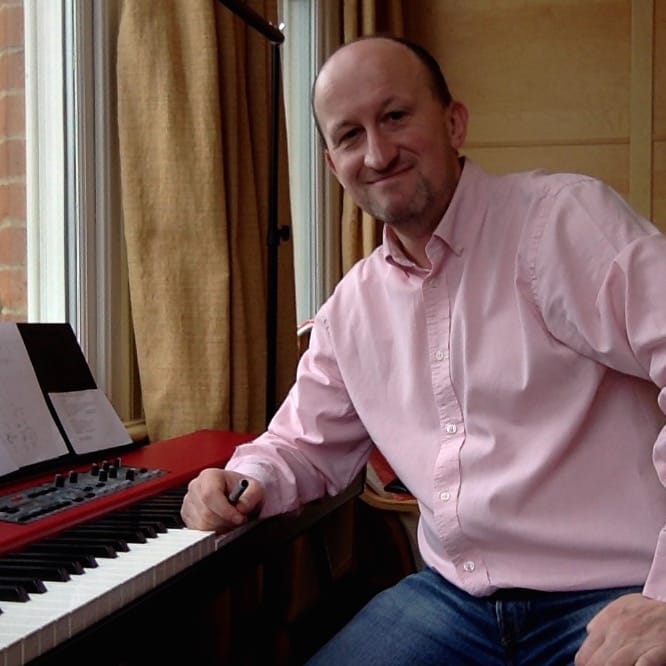 It’s Jelly Roll Morton (piano and vocals) and his band, the Red Hot Peppers performing “Dr. Jazz” in 1926.
It’s Jelly Roll Morton (piano and vocals) and his band, the Red Hot Peppers performing “Dr. Jazz” in 1926.
Morton’s “Dr. Jazz” was massively influential on me when I was first starting to improvise in my school jazz band. The thing I love most about it is its infectious joviality and the hard-driving sound often associated with Dixieland jazz. To what extent it’s improvised is an interesting question. As with a great deal of jazz and other improvised music, it sounds like quite a lot of advanced planning has gone in – probably in the form of “head arrangements” worked up by the band in jam sessions, rather than in the form of written score.
Reflecting on that when I was a kid got me thinking seriously about improvisation for the first time. What is it, exactly? Is improvisation really the magic it can seem to non-improvising musicians? Or is it, in a reality, usually a mashup of planning, experience, pre-made sections, and a certain amount of genuine “on the fly” playing?
The great thing about Dr. Jazz, if you listen carefully, is that you can hear all those elements in it. In a way, it’s as precisely constructed as a Bach chorale, yet still has this fantastic sense of spontaneity and joy.
Bio: Bill Hilton is a musician, writer, and composer. He runs a top-rated YouTube channel dedicated to piano learning and is the author of How To Really Play The Piano and other books.
Steve Lawson (SteveLawson.net)
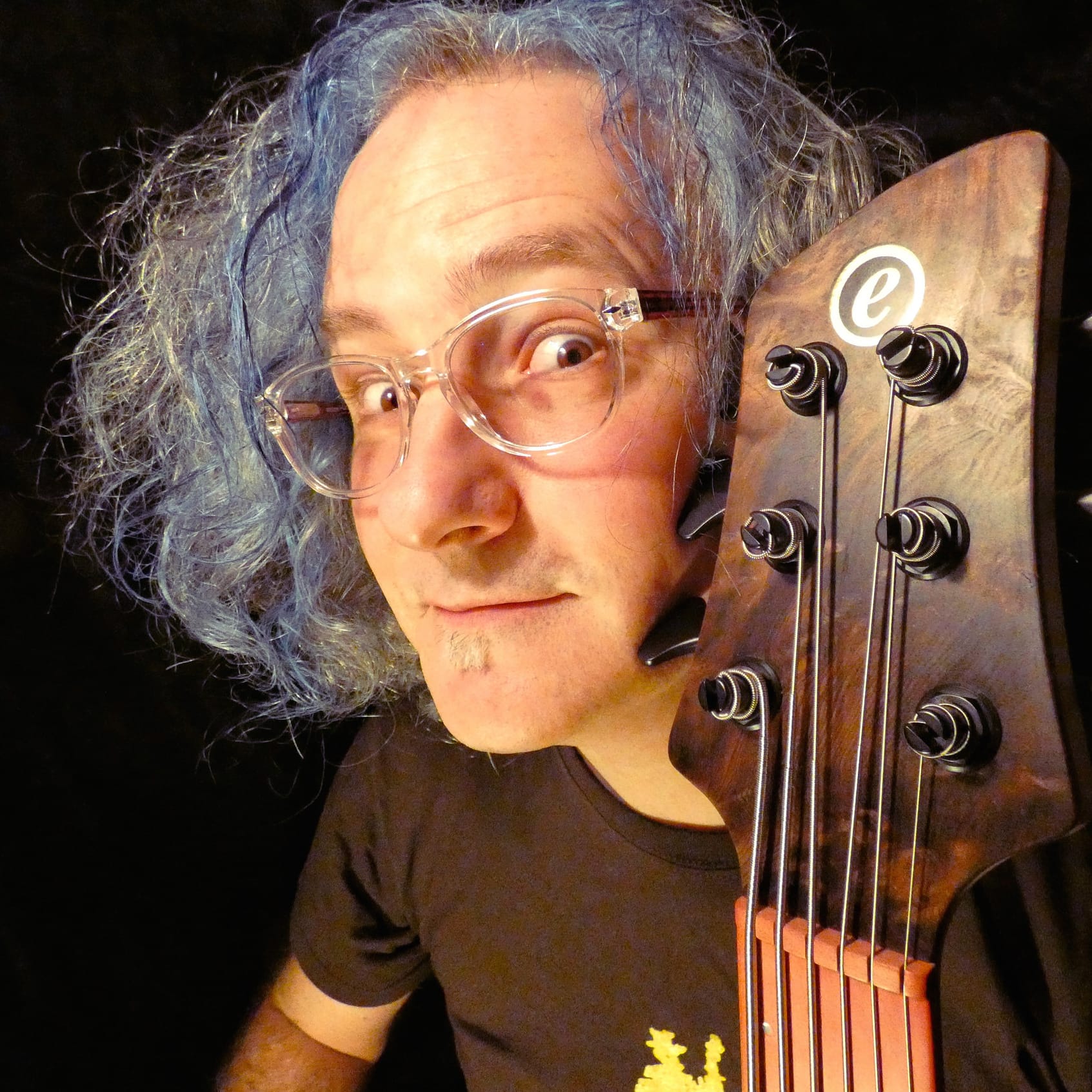
One of the first improvised recordings to make a big impact on me was “Outside In” – the opening track from John Martyn’s Live At Leeds album. It features John on guitar, the great Danny Thompson on upright bass, and John Stevens on drums.
I think what struck me – and still inspires me – is the remarkable blend of approaches to improv. There are elements in the music drawn from folk, jazz, rock and progressive musics. Harmonically, it’s not all that complex, but what they do within the fairly simple song structure that book-ends the piece is astounding. The listening that goes on is remarkable – the ebb and flow of the piece and how the three musicians respond to one another, with John’s delay time keeping everything together:
There are so many elements to the piece (it’s 18 minutes long!) and I love the way each musician gets to bring their personality to it. Danny is one of the greatest upright players the UK has ever produced, and has such an extraordinary combination of groove, tone, harmonic knowledge and dexterity. A hugely inspiring performance.
Brent Vaartstra (LearnJazzStandards)
 For me, the spirit of improvisation is self-expression, and while self-expression can be a powerful thing, without an anchor its power can deteriorate.
For me, the spirit of improvisation is self-expression, and while self-expression can be a powerful thing, without an anchor its power can deteriorate.
As a musician raised and trained in the realm of Western music, the many musical styles that come from Africa have fascinated me, mostly because I know so little about them. I can only listen in amazement to the collages of rhythms so beautifully and effortlessly woven in and out of each other.
It wasn’t until I took a class back when I was in college called “African Percussion Ensemble” that I started to listen to this music. My professor Neil Clarke was a trained percussionist in the African idioms, and incredibly knowledgeable. He opened me up to some of the styles and rhythms coming out of the continent.
I’ve heard it said before that in Africa, there are not separate words for “music” and “dance.” They are one and the same.
When you listen to African percussion ensembles, you hear a variety of percussion instruments playing together. If you listen closely you can pick out the roles of the different instruments. Some lay down what is called “the clave” in Latin American styles of music, others provide supporting roles, while others clearly improvise.
In truth, they are all improvising. But they are clued in to the structure that they are improvising within. In other words, they improvise not to only express themselves, but to express the collective music that is being created between all of the musicians.
I don’t pretend to understand it, but I find it fascinating and worth exploration. Take a listen to some of this music from Ghana, and intentionally listen for the different instruments. Listen critically, because not all of them are as obvious as others:
Now ask yourself, what can you take away from this to apply to the style or styles of music you play?
Brian Kelly (Zombie Guitar)
 The first example of a really good “improvisation” that came to mind was a particular live version of the song called “Mound” by Phish.
The first example of a really good “improvisation” that came to mind was a particular live version of the song called “Mound” by Phish.
Phish is a “jam band”, so pretty much every song they play live is improvised in one way or another. For those who listen to Phish, they know that they never play a song the same way twice. However, the reason that I picked this particular song from this show is because they never did a guitar solo in this song – I actually went and listened to about 30+ other live versions of this song just to confirm this. The way this song is “written” is that the outro ends with a short, improvised keyboard solo. The improvisation starts at [6:14]:
I was at this show, and I got to see the one and only time that Trey ripped an improvised guitar solo. I was informed about this by my cousin Kristi who is the biggest Phish fan that I have ever met (unfortunately she is no longer with us… Rest In Peace). She explained to me that Trey messed up in the final chorus of the song – that his vocals and guitar were a little “sloppy” compared to his usual perfection, and as a result he decided that he was going to make up for his “mistake” by shredding a guitar solo in a spot where there wasn’t supposed to be one. It was kind of like “Oh no, I messed up… I’ll show them!!”.
There was a certain emotion behind this solo, and the more I listen to this version of this song, and the more I notice the minor mistake that sparked the improvisation, the more I “feel” what he was trying to convey.
For those of you that are avid Phish fans like myself, you probably “get it”. For those of you that don’t know much about Phish, but you want to understand where I’m coming from, you could simply compare this version to any other live version (or studio version) that you find on YouTube, and you will see what I’m talking about. You may even also catch Trey’s little “mistake” which sparked this improvised solo!
Dave Bainbridge (Iona, Celestial Fire)
 Whilst in the college music library one day browsing through the albums there, I noticed one by someone called Keith Jarrett, titled “Facing You”. Not having heard him, I listened to the album and was immediately transfixed.
Whilst in the college music library one day browsing through the albums there, I noticed one by someone called Keith Jarrett, titled “Facing You”. Not having heard him, I listened to the album and was immediately transfixed.
This was piano music like I had never heard, beautiful melodies, played with incredible fluidity and honest emotion. I was hooked. It sounded like the melodies had been composed, but I later learned that that album was completely improvised, recorded in a day. I discovered that Keith performed complete concerts with nothing prepared beforehand, drawing upon a huge range of influences that included the jazz, gospel, and blues traditions, but also the whole Western classical idiom including the avant-garde, atonal composers.
I became an avid listener of his music and discovered other albums on which he’d not only improvise over chord changes in the standard jazz way, but would also spontaneously invent the chord sequences and melodies as he went along! Sometimes there would be complex contrapuntal playing, or the piano would become a huge, monolithic soundscape. At other times there would be incredible grooves and left hand ostinato patterns with free flowing cascades of notes, joyously delivered:
I got to see him play an improvised solo piano concert and it was mesmerizing. The improvisation flowed without restraint, through different emotions and styles, yet retained a cohesiveness that carried the listener along.
Through listening to Keith, I realised that playing a solo over chord changes is only one a small part of what improvisation can be. I realised that improvisation can include spontaneously creating whole chord sequences, developing melodic fragments contrapuntally, creating different moods and stimulating emotions through dynamics, fast and slow playing, high note or low note passages, dense, complex harmonies or the simplest triads or open intervals, including elements from all world music traditions and much, much more.
It was the album Facing You that opened the door for me. Since then I regularly take the time to improvise, especially at the piano. I’ve recorded two albums of spontaneous improvisations – From Silence (with Troy Donockley) and The Remembering (solo piano), and usually include some spontaneous improvisation in my solo concerts and duo concerts with Sally Minnear. I also love structured music of course, but sometimes it is only when I improvise that the true magic and freedom happens, when the spirit soars. To quote William Blake:
“If the doors of perception were cleansed, every thing would appear to man as it is, Infinite. For man has closed himself up, till he sees all things thro’ narrow chinks of his cavern.”
David Andrew Wiebe (The Music Entrepreneur HQ)
 I used to play in an oddly named band called Lightly Toasted Touché. The drummer and I were best friends and we were always collaborating on a lot of projects. So, when we decided to start a band, we were already thinking about what our unique value proposition would be.
I used to play in an oddly named band called Lightly Toasted Touché. The drummer and I were best friends and we were always collaborating on a lot of projects. So, when we decided to start a band, we were already thinking about what our unique value proposition would be.
We decided that our live set would be made up of both songs we practiced, as well as spontaneous jams, just like our rehearsals were. What this meant was that there would always be a few songs in our set that were unique to the gig. Sometimes we would bust out a reggae jam. At other times, we would play metal, or the blues.
We would occasionally share some of our recordings on the internet, and the first time we did that we quickly exceeded our server’s bandwidth and had to move the site over to new hosting. That was a good problem to have.
When we went to work on our first EP, we also recorded about eight improvised songs in the studio and included the best ones in our first release with the long-winded title, A Tale of the Coming Together and Murder of My Heart in the Golden State:
Of the eight tracks on that release, “Commercial Air Disaster”, “Grad Prix” (my favourite), “Autumn Moonlight” (most people’s favourite), and “Bluer Than Punk” were all improvised.
A couple of my other favourite examples of improvisation:
- Jimmy Page was said to have taken only a couple of runs at the guitar solo to “Stairway to Heaven”, which is beautiful and melodic.
- Likewise, Eddie Van Halen was said to have only taken a couple of tries to the guitar solo to Michael Jackson’s “Beat It”. It’s a monster solo, so all I can say is – the man must have been extremely inspired that day.
Ged Brockie (Guitar & Music Institute)
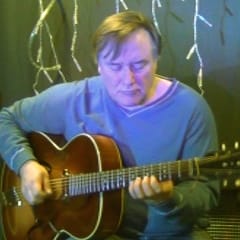 When asked to submit my favourite piece of improvisation, I thought it would be a straightforward task, however, on reflection it was a difficult thing to do. The reality is this: there is so much music that I’ve listened to over the years that would ultimately make the number one spot.
When asked to submit my favourite piece of improvisation, I thought it would be a straightforward task, however, on reflection it was a difficult thing to do. The reality is this: there is so much music that I’ve listened to over the years that would ultimately make the number one spot.
In the end, I’ve chosen to pick a track that made a huge impression on me as a fallow teenager striving to learn my chosen instrument, the guitar. Back then, the idea of my being able to improvise anywhere close to the level heard on this track seemed a distant dream. Now after years of playing in the business and dedicating an entire life to the study of and performance of guitar and specifically jazz guitar, this track still shows me the way!
I’ve chosen the track “Four on Six” by Wes Montgomery from the album “The Incredible Jazz Guitar of Wes Montgomery”:
That album has quite a title, however, there is no doubt that the music bound within it lives up to the hyperbole of the title. So why Wes Montgomery and why this track?
For me, Wes was a true one-of-a-kind musician. If you listen to and analyse his solos you will of course find some incredibly complex ideas throughout. However, on many occasions, you will find that he is playing what could be considered by some as an “obvious” choice of notes over a given harmonic progression, and yet, it still sounds amazing. This is the key to Wes Montgomery’s enduring appeal. It’s not just the notes he played, but they way he played them. His unique and magical sound, created by playing with his thumb rather than a plectrum has a rather prosaic beginning; he needed to keep the noise down when practising at home as the neighbours were given to complaining. The rhythmic pulse inherent in his lines that create a cascading waterfall of melodic invention has often been imitated but never bettered. His use of rhythmic diversity within and beyond the bar line meant a continual refreshing of old musical comments as new on the day they were played as they are when listened to today.
“Four on Six” is just one of a myriad of examples of stellar improvisations that could have been picked from Wes’s recordings. This track really stands out in its hypnotic rhythmic spell based on four notes which dance over the opening sequence. Specifically, I chose this track due to its challenging harmonic progression which is itself a harmonic substitution over a simple minor blues twelve bar sequence. As with any person who is highly skilled in a given art form, the listener would not be aware of the immense challenge the progression offers. The intricate weaving through three fast changing key centres which include chromatic movement is achieved with effortless creativity, developed by Wes in a prolonged improvisation.
More than this, Wes shows masterful control in the way he builds the solo through the phrasing of his melodic ideas and how, through the use of octaves he brings the improvisation to it’s ultimate climax.
Listen to a live performance of Four on Six and see the notes Wes plays:
Jeffrey Agrell (The Creative Hornist)
 Let’s try this: what’s a good way to start improvising? Like conversation, it’s easiest if you have a partner. A great way to get started, or to warm up for that matter, is to play a slow tune over a drone.
Let’s try this: what’s a good way to start improvising? Like conversation, it’s easiest if you have a partner. A great way to get started, or to warm up for that matter, is to play a slow tune over a drone.
This is Lin Foulk, horn professor at Western Michigan University, and I playing over a drone. The drone is the tonic, and you can play anything you like over it. Since there is no pulse, you don’t even have to worry about fitting a meter. You can be very expressive playing over a drone, and there is no pressure to churn out a lot of notes. It’s very calm, relaxing, and satisfying, and perfect for starting improvising:
After the drone, I would recommend adding a pulse: the “pulsed drone.” This is just playing the drone with any kind of regular pulse or rhythm. Steady quarter notes are fine, and you can also add some rests and dotted rhythms if you like. Here’s an example (Lin and me again):
There is a lot of trouble programmed into the definition of the word “improvisation”. Most people, musicians or not, associate the word with jazz, and that definition keeps 94% of all musicians from experiencing improv.
My final goal is to get everyone making their own music in any way they can. So we need a much broader definition that lets everyone in. We need to find a way to get people playing and discover that:
- They have a unique voice
- Our new definition is about choice and imagination, not about perfection
- You can work on all of the same things (technique, musicianship) in creative music that you can in notated music
- It’s fun
- It’s easy
One more crucial item to be discovered along the way is that improv is social – the real reward is making music with others. As you see in the videos with me and Lin, you can focus on practically any aspect of technique or music with a collaborator and have a heck of time as you do so.
With improv, you are deepening your understanding of music itself: how to create a strong idea and develop it. Just as in ordinary conversation, you “converse” in music, listening, responding, creating, following up ideas. Students should be reminded that notation-only music study is an anomaly, a temporary aberration, since the aural and creative aspect of music has been part of Western music tradition since time out of mind. Fortunately, improv is finally making a comeback. It will take time before academia gives it the support and respect it deserves, but anyone can simply add it to their own playing and teaching with or without help from the ivory tower.
Jeremy Burns (Music Student 101)
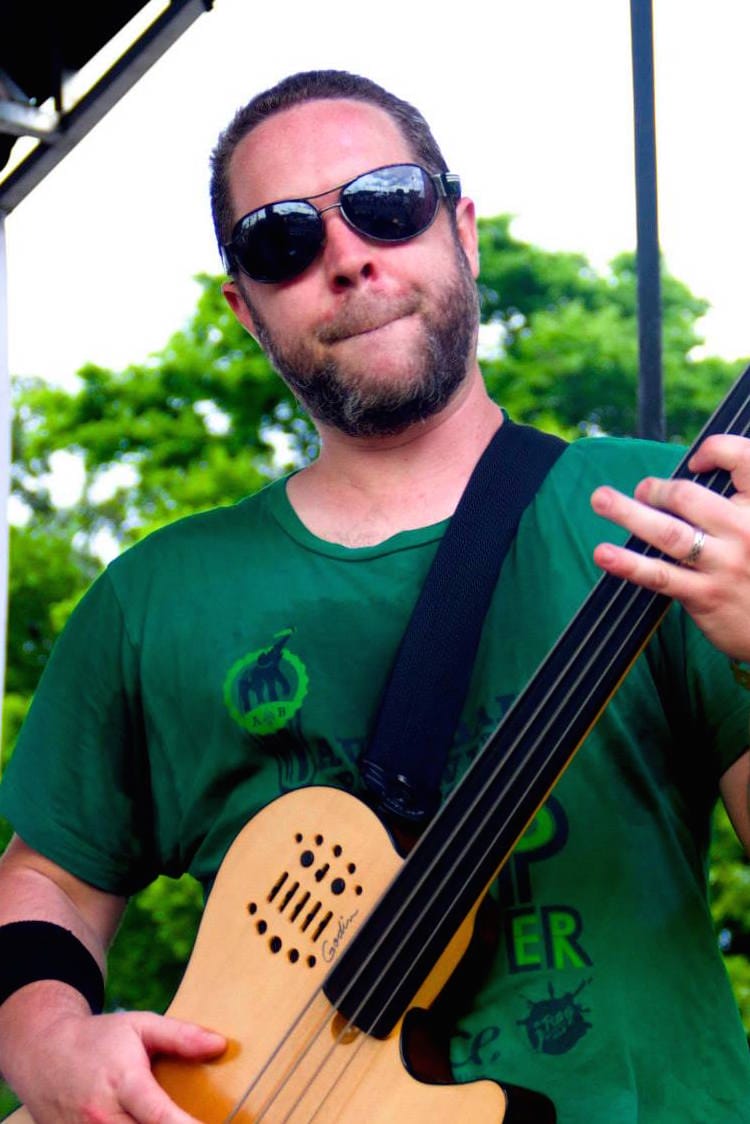 Some of my favourite types of improv occur within the synergy of the band. One example is recovery.
Some of my favourite types of improv occur within the synergy of the band. One example is recovery.
Suppose the lead singer forgets to come in on the verse at the appointed time. A good band will vamp that on that starting chord and not change until the singer finds their place. If the singer finds their place on an upbeat, then a good band will be able to flip it to the down beat so that everyone is back together again. I used singers as an example, but this can apply to any band member.
Another “synergistic” thing I like to hear and accomplish is when the band begins to feed off of another member’s improv. One example is when two soloists trade off licks but include and create variations of the content of the other’s licks. Sometimes, I (a bassist) will echo cool licks I hear from the soloist, as if to say, “Oh yeah! I’m supporting you and listening to you”. It always makes them smile!
All of the above mentioned scenarios take a certain mastery of your instrument as well as experience playing with other musicians. The best “experience points” can be gained by playing live regularly with other musicians on your level, in both musicianship and personality.
Mark Michell (Low End University)
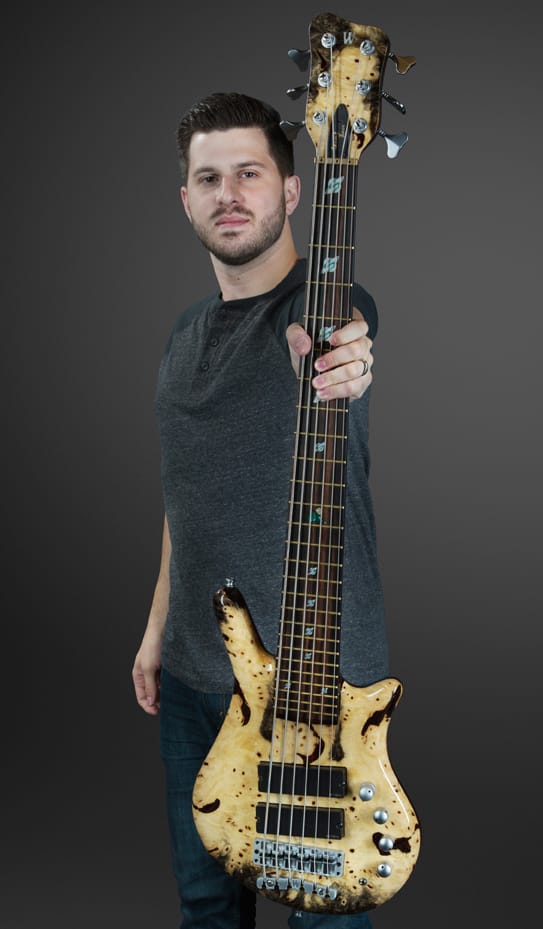 My all-time favourite example of improvisation occurs when a group of musicians begin a song, but don’t know what they’re playing. Wait… how is that possible?
My all-time favourite example of improvisation occurs when a group of musicians begin a song, but don’t know what they’re playing. Wait… how is that possible?
Sounds confusing, I know!
However, this method has been responsible for producing some of the most interesting music of our time. How does this work, exactly? Well, by musician standards, this happens when a band might decide on a key, style, or tempo, and they just play. Usually one instrument will begin the song and dictate the starting point – perhaps the drummer will begin playing a beat, and then after several bars, the guitar player will improvise a riff and before you know it, a song begins to quickly develop.
Liquid Tension Experiment is a side-project formed in the late 90’s by several members of Dream Theater and Tony Levin, and this project was an all-instrumental take on progressive rock/metal. “Three Minute Warning” is an interesting facet of this project, as it was created spontaneously out of frustration during their album-writing sessions, and they decided just to hit record, and play, resulting in a near half-hour song of pure improvisation and spontaneity:
Musically speaking, the track contains a plethora of twists and turns with many interesting dimensions.
Aside from the artistic reasons for doing this, this undoubtedly serves as an amazing exercise for all musicians looking to sharpen their listening skills, creative skills, and learning how to fly by the seat of their pants – a frequently used skill for any musician. On many occasions, “writer’s block” can result in a musician thinking too hard about a composition, or becoming too analytical about their art form. Improvising as a means to compose music will help to deliver ideas from a more subconscious space, and allow ideas to flow on a reactionary level rather than by means of predisposition and calculation. Art was always meant to flow from the soul – don’t forget to let that happen occasionally!
Ruth Power (PianoPicnic.com)
 My favourite example of improvisation on the piano comes from a “piano battle” that commenced between Andrew WK and Chilly Gonzales in a New York pub in 2009. This resulted from a challenge issued by Gonzales to WK to settle their differences in a collaboration/battle royale due to their having both released recent solo piano albums at the time. WK, known for his “party hard” anthem and antics, didn’t back down, and so they came to battle in a piano bloodbath one fateful night.
My favourite example of improvisation on the piano comes from a “piano battle” that commenced between Andrew WK and Chilly Gonzales in a New York pub in 2009. This resulted from a challenge issued by Gonzales to WK to settle their differences in a collaboration/battle royale due to their having both released recent solo piano albums at the time. WK, known for his “party hard” anthem and antics, didn’t back down, and so they came to battle in a piano bloodbath one fateful night.
This video, taken on the phone of a audience member, gives us a glimpse at two very accomplished pianists playing with their reputations at stake, at times blindfolded and just having a ridiculous amount of fun:
For me, when I first saw this video I had never heard the words “piano” and “battle” put together, and I had never seen two blindfolded pianists and a pub full of people have so much fun. It encouraged me to not be so serious about being a pianist, and to pursue playing by ear to such a degree that one day I could play blindfolded in case I was forced to do so!
Scott Sharp (Fretboard Toolbox)
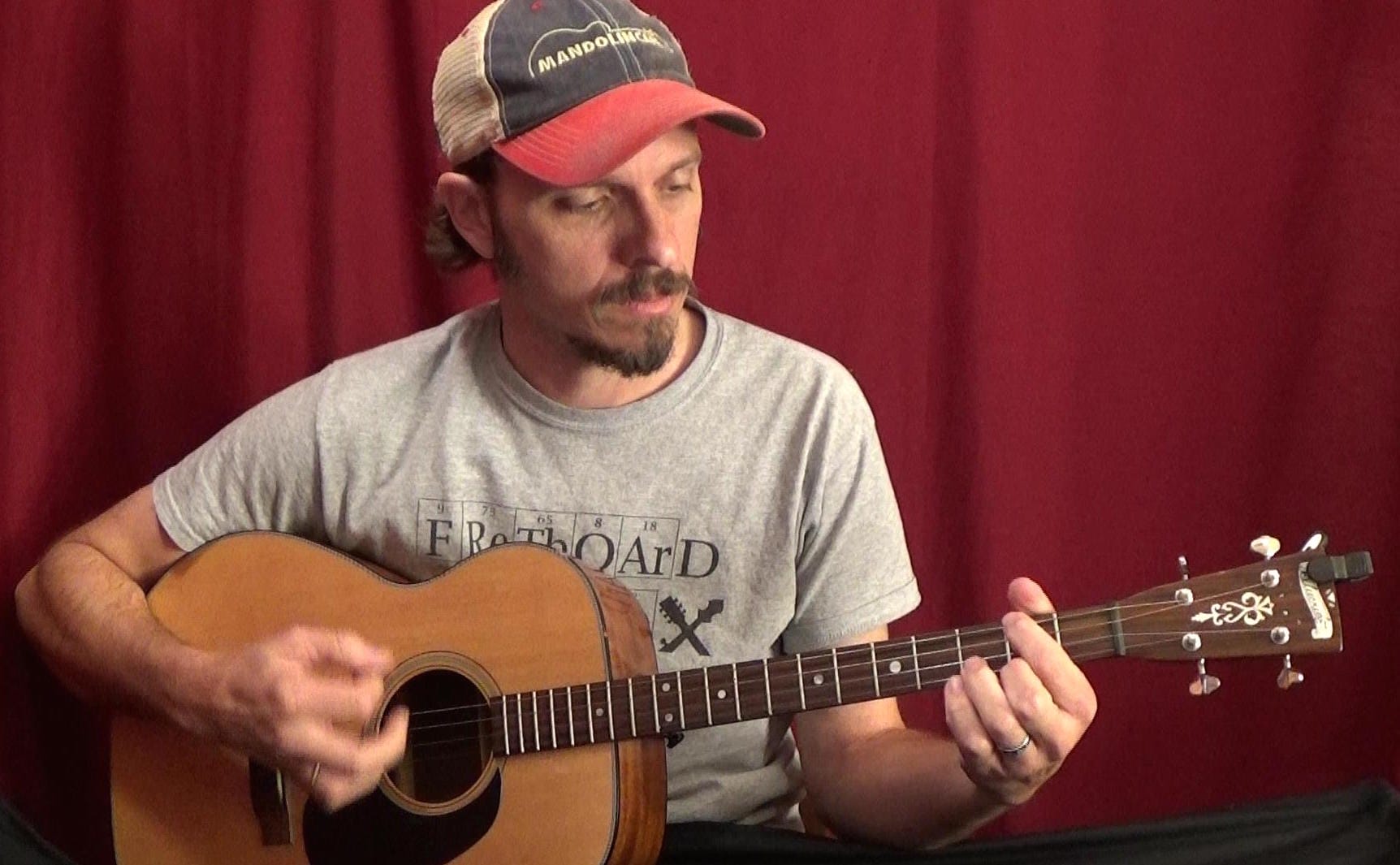 My favourite type of improvisation is the kind that happens at spontaneous campground jam sessions at Bluegrass music festivals. This one was at a campground at the Walnut Valley Festival in Winfield, Kansas, and was a random jam session that included some amazing players from several different bands.
My favourite type of improvisation is the kind that happens at spontaneous campground jam sessions at Bluegrass music festivals. This one was at a campground at the Walnut Valley Festival in Winfield, Kansas, and was a random jam session that included some amazing players from several different bands.
It is representative of the type of jam session that happens day and night in countless campsites at this festival, which is going on its 47th year:
I love when musicians from all over the world get together and share the common language of music. Being unrehearsed, this type of music is full of accidents, and full of magical moments. This music is full of beautiful old songs with heartfelt lyrics, and with players taking turns playing improvised solos (or “breaks” as they’re called) interspersed throughout the songs. It’s all “on the fly”, so you never know what’s coming next! You can’t help but learn a ton, and be moved, by listening to player after player express themselves by playing what they feel “in the moment”.
Bob Habersat and Paul Levy (Shed the Music)
 Our improvisation concept is firmly rooted in the jazz tradition at The Shed. While we do listen, enjoy, and are influenced by other improvisatory musical styles, our heart is with this music.
Our improvisation concept is firmly rooted in the jazz tradition at The Shed. While we do listen, enjoy, and are influenced by other improvisatory musical styles, our heart is with this music.
With that being said, we are heavily influenced by the 1960’s Miles Davis Quintet and their concept of collective group improvisation. This group (Miles, Wayne Shorter, Herbie Hancock, Ron Carter, and Tony Williams) laid the groundwork for “modern” jazz improvisatory language. This group would take a jazz standard like “Autumn Leaves” and turn its harmonic progressions on its head:
Soloists had the ability to freely navigate away from the exact written harmony and reinterpret it how they saw fit. Obviously, these musicians had the ability to “play the changes” but were on such a level that they could stray away and still make it hip.
Steve Nixon (FreeJazzLessons)
 Miles Davis is a true master of melodic and stylistic improvised lines. Not only did I learn incredible swing articulation, idea development, and great minor lines from this solo, but I also learned how to make one chord sound exciting.
Miles Davis is a true master of melodic and stylistic improvised lines. Not only did I learn incredible swing articulation, idea development, and great minor lines from this solo, but I also learned how to make one chord sound exciting.
This was a technique that I have used to great advantage in funk, modal jazz, and rock gigs. I’ve created a transcription and lesson on the Miles solo.
Here’s Miles Davis’s “So What”:
Barry Harris a bebop genius. The amount of ideas that he gets out of 12 bars of music was eye-opening for me. Barry pretty much proves that most of the scale and note choices that people say you “should” play on the blues is wrong, from all 12 notes to major 7ths on dominant chords. Here’s an example of Barry’s great improvisation here, and once again, a transcription and lesson on his solo in “Moose the Mooch”:
I came into jazz through the backdoor and never looked back. What do I mean about the backdoor? I mean I first started listening to jazz-influenced rock bands like the Allman Brothers, Steely Dan, Grateful Dead, and Phish. I’ve always gravitated toward the sound of improvisation in rock – I even have a lesson for learning some licks from Greg Allman’s keyboard player!
Tim Topham (TimTopham.com)
 My favourite example of improvisation is when teachers are put on the spot by a student who:
My favourite example of improvisation is when teachers are put on the spot by a student who:
- has done no practice
- is in a bad mood, or is upset and not themselves
- has forgotten all their books
- arrives very late
Instead of trying to teach their normal content, the teacher decides to go “off track” and explore some more creative ideas that the student can enjoy without stress, while still keeping the material just as musical as anything else they would have been doing.
These are the kind of lesson ideas that I strive to provide for teachers through my blog and podcast. Unfortunately, situations where teachers have to “improvise” their lesson content are all too common these days, as kids are torn between more and more activities and have less and less time.
The great thing is that many of these improvised lessons actually provide a deeper level of understanding of music, more engaging content, and are great fun for teacher and student alike. This is why I’m so passionate about helping to support teachers to get “off the page” when they teach.
Many of my own teaching resources like No Book Beginners and 4 Chord Composing have been borne out of the teaching “improvising” I did earlier in my career, and now form a major part of my own teaching repertoire.
Here’s an example of me teaching my 4 chord composing approach to a student in a lesson:
I encourage students and teachers alike to realise that you don’t have to be playing the blues to be improvising – just about anything that breaks out of the mould of “traditional” or “classical” teaching is, in fact, improvising!
Improv, in Infinite Ways
We purposely left the question quite open-ended so our experts could think abstractly about improv, and how it can manifest outside being a mere guitar solo or jazz lick.
Aside from the wonderful examples of creative improvisation by the greats (of all genres!) discussed by our experts, there were some definite curveballs in there.
Jeffrey Agrell presented the idea of drone-based improv for beginner improvisers to get comfortable with the art. Mark Michell discussed spontaneous playing that is born out of the frustration of writer’s block. Tim Topham, meanwhile, looked at the idea of musical improv from an entirely different angle: that of a teacher who must make do with an unprepared or unmotivated student.
The best part is, all of these are fantastic manifestations of what improv can be, when you’re equipped with the musical tools and the mindset to go for it.
We hope these examples have inspired you to think about how you can improvise – not only when you’re alone with your instrument, but in the bigger picture situations of jamming and writing music in a band, sharing musical knowledge with your collaborators, and even performing live!
The post 15 Improv Experts Share Their Favourite Examples of Improvisation appeared first on Musical U.